Table of Contents
Lavender plants are a popular flower and are easy to grow. They bring colour to your garden and attract butterflies, bees, and other pollinators. These fragrant summer flowers come in purple, pink, white, and blue colour while blooming during the summer months. Lavender flowers can be used in biscuits, ice creams, and cakes, while lavender oil is a favourite in perfumes and aromatherapy. With all of these fantastic reasons, it is no wonder lavender is planted in several gardens in the UK.
After you have decided to plant lavender, you will have rich flowers and aromatic foliage with hard work. In this article, you will learn which soil to use for lavenders, how much to water, where to sow, when to sow, when to prune lavender, how to overwinter the plants, and much more.
This way, you can enjoy the fragrance and colours of lavender in your garden.
About The Lavender Plant
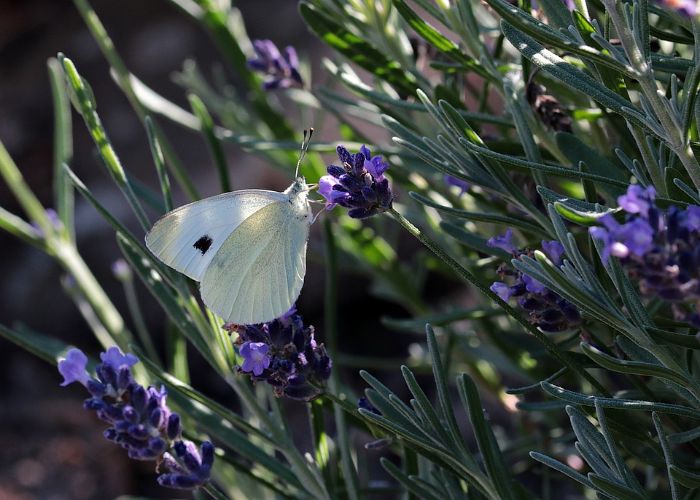
Lavender is a genus consisting of 47 known species of flowering plants in the Lamiaceae or Labiatae family; the family is also popularly known as mint, sage, or deadnettle. The most popular English lavender (Lavandula angustifolia) is Hidcote and Munsted in the UK; another English hybrid called L. × intermedia and French and Spanish hybrids are also beautiful additions. The lavender plant is native to the Mediterranean region.
Brief Overview of Lavender
- Scientific Name – Lavandula angustifolia
- Common Name – English Lavender or Common Lavender
- Plant – Shrub
- Hardiness – H5
- Height – 0.1 – 0.5 m
- Spread – 0.5 -1 m
- Sunlight – Full sun
How to Plant Lavender
With careful planning and meticulous work, your lavender plants will be blooming soon in your garden.
1. Where and When to Plant Lavender
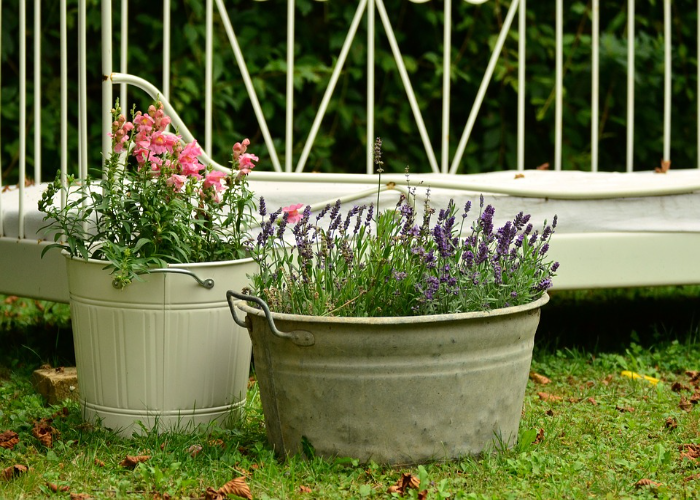
Lavender can be planted in garden borders, herb gardens, pots, or containers. They like sunlight, so a south or west-facing location is preferred. They need good drainage and will not enjoy damp, cold, or shady conditions. The best time to plant lavender is during April or May since the soil is naturally warmed up. Do not plant lavender in winter because young lavender can rot in cold and wet soils.
2. How to Plant Lavender in The Ground
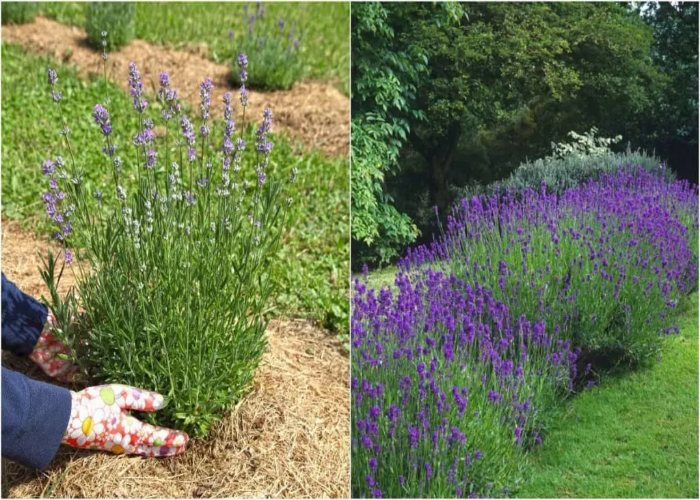
Place the lavender plants into the soil and space out the plants since lavender grows up to a height of 0.5m and has a 1 m spread. If you plan for a lavender hedge, then you should plant the lavender 30 – 45 cm apart, depending on the chosen variety. Lavender is planted in the spring because they need the summer months to grow before the winter months come. The planted lavender should be at the same depth as in the pots they came in.
3. How to Plant Lavender in Containers
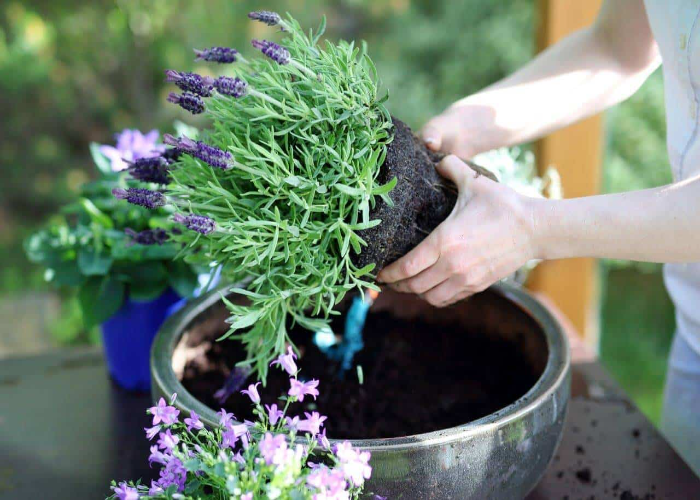
Pick a container or pot that is 30 – 40 cm in diameter. For good drainage, put in a multipurpose or loam-based compost with coarse grit or perlite. The lavender plant must be at the same level as in the post you purchased it.
4. When to Water Lavender
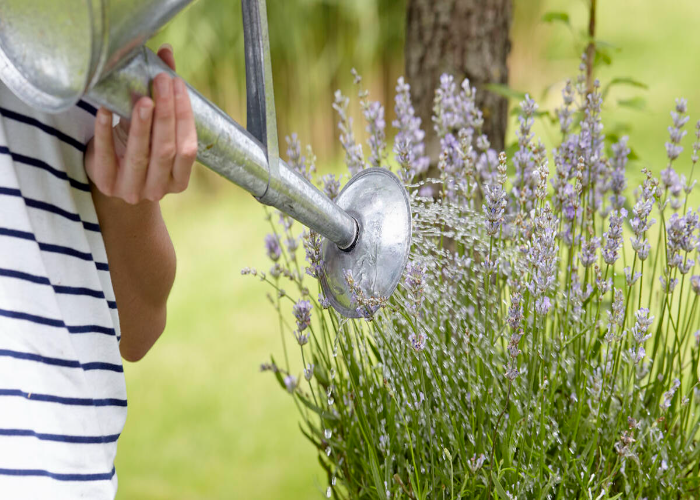
In general, new lavender plants need regular watering once they have been planted. Once established, lavender is a drought-tolerant plant; if they are severe drought conditions, then water the plant. If you planted lavender in the ground, make sure to water the plant regularly in the first growing season, especially in dry weather. For lavender in containers, water the plant once planted; during the summer, water at regular intervals, for example, once or twice a week, especially if the weather is hot and the compost is drying out. The lavender in pots will dry out much faster.
5. Which Soil Type for Lavender
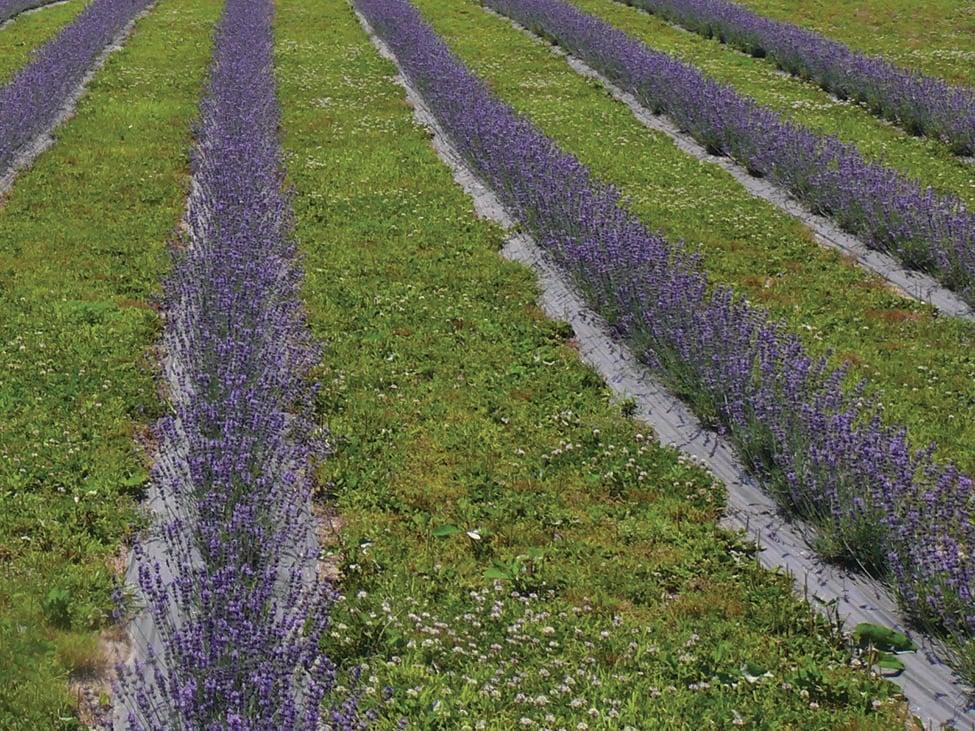
Since lavender is Mediterranean in origin, give your plant lots of sunlight and fast-draining soil. Lavender plants prefer soil that is poor, dry or moderately fertile. Chalky and alkaline soils are a good choice, as they are not too acidic. Lavender plants do not need soil rich in nutrients as they are not hungry, so they do not require feeding.
6. When to Prune Lavender
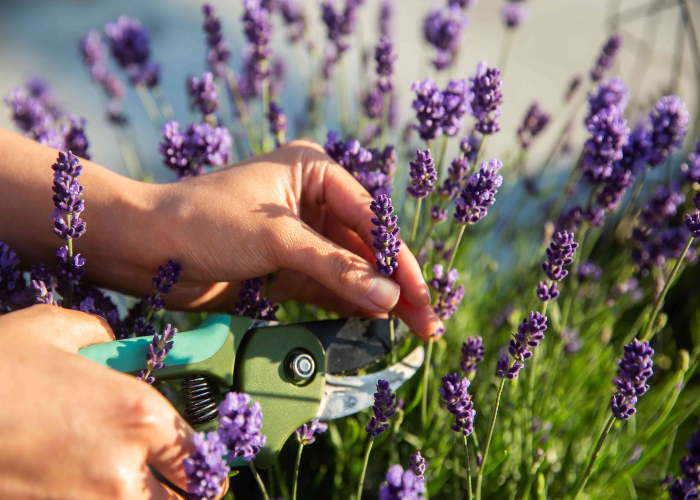
The Royal Horticultural Society recommends trimming Lavender plants annually in late summer after the flowering has finished and before the cold months start. Pull out any spent flower stalks and around 2.5 – 3 cm of green growth. You can cut off some foliage in spring if any leaf growth is untidy or damaged from frost.
7. How to Propagate Lavender
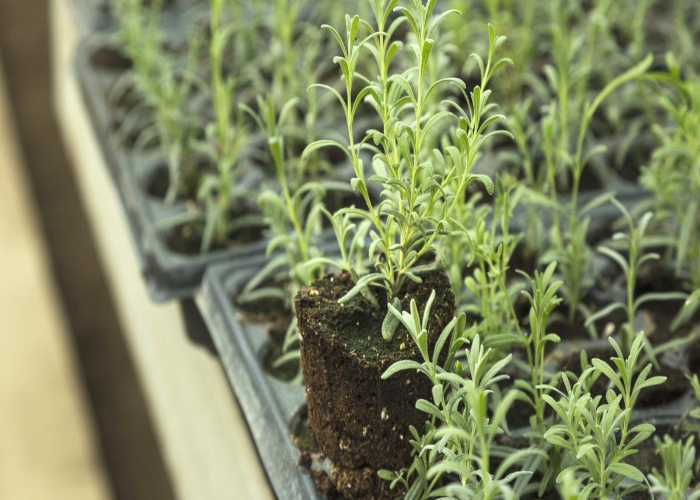
To make new plants, take softwood or semi-ripe cuttings from young lavender plants in the early to midsummer. If you want to use hardwood cuttings, wait until after flowering in late autumn and preferably from new growth flushes.
8. Common Diseases and Pests for Lavender
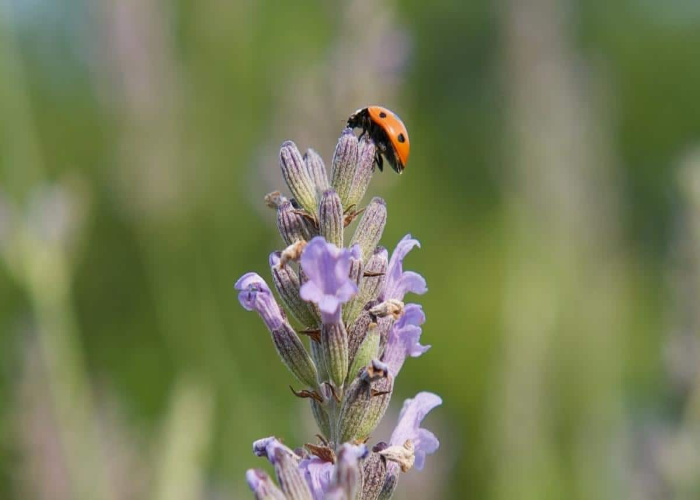
Lavender plants will grow ideally in the right conditions. But there are a few things to keep an eye on. A few pests will feed on lavender which includes: rosemary beetle, cuckoo spit, Sage leafhopper, Ligurian leafhopper, and Xylella. Wet or heavy soil leads to lavender root rots and the demise of your plants. So, grow lavender in a raised bed or container if your area has these root conditions. Certain lavender types are not hardy and will not survive outside in winter, so if you want to leave your lavender plants outside permanently, buy a hardy lavender plant.
Tools Needed for Lavender Plants
You will need a few things before you start planting lavender in your garden. Some young lavender plants will help you get started.
- Drought Tolerant English Lavender Munstead Shrubs
- English Lavender Augustifolia ‘Hidcote’ Perennial Garden Plug Plants
- Hardy Shrub Lavender Hidcote Lavandula angustifolia English Lavender
- Lavender Anouk Butterfly Lavender Bush
Having the right compost will help in growing your lavender.
- KEPLIN 10L Multi-Purpose Potting Compost
- Miracle-Gro All-Purpose Compost
- Multi-Purpose Compost with added John Innes 60L
- Richard Jackson Flower Power Premium Multi-Purpose Compost
Once you know when to prune lavender, you should have a secateurs handy.
- FLORA GUARD Secateurs, 8.5 Inch Traditional Bypass Pruning Shears
- AIRAJ Secateurs Set of 2, Bypass and Anvil Pruning Shears with Rust Proof Stainless Steel Blades
- WISCOLS Secateurs – Heavy-Duty, Bypass Professional Pruning Shears with PVC Handles & 8cm Stainless Steel Blade
- Gonicc 8″ Professional Secateurs Premium Titanium Bypass Pruning Shears
Lavender Winter Care Guidelines
Lavender is a wonderful choice for your ever-growing garden, with fragrant blooms in the summer months. To enjoy lavender during the summer months, you need to be ready to care for lavender in the winter months.
1. The Lavender’s Hardiness
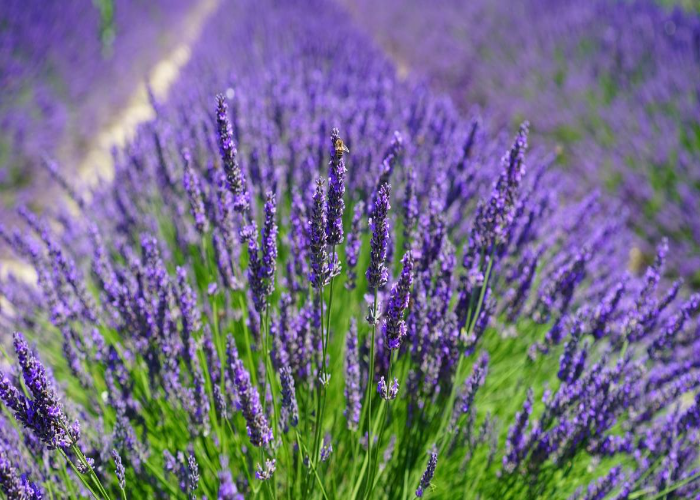
All the lavender grown in the UK has different hardiness. Some examples include L. angustifolia – H5, L. x intermedia – H5, L. stoechas – H4, L. latifolia, L. penduncula, and L. viridis – H3. If you do not know the hardiness scale of the Royal Horticultural Society, here is a quick summary. H5 is for plants that can survive in most places in the UK, even in severe winter months. H4 is for plants that can live throughout most of the UK. H3 is for plants that can grow in the UK’s coastal and relatively mild regions. Which region you live in and which lavender variety you planted will tell you whether your plants can survive outside in winter or need to be moved to a frost-free location.
2. Lavender Pruning
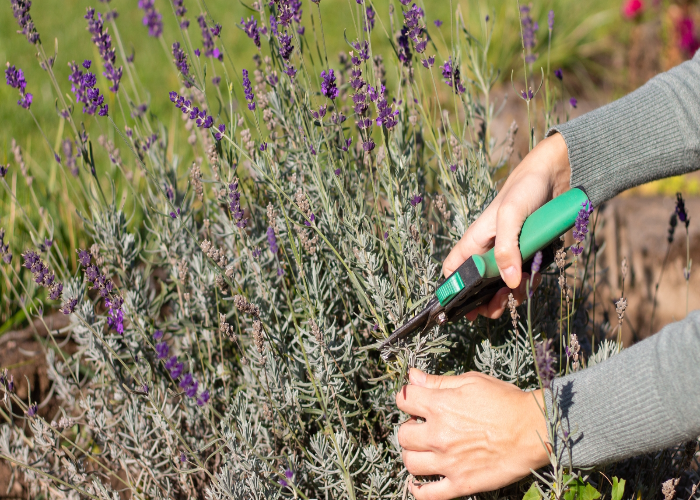
Even though some lavender varieties can survive winter temperatures, some winter conditions, such as winter wet, are still problematic for hardy lavender species and hybrids. Prune your lavender plants in August or September after the flowers have faded and before the cold weather comes. So knowing when to prune lavender will make sure your plants will make it through the winter months whole.
3. Right Care for Lavender Outdoor
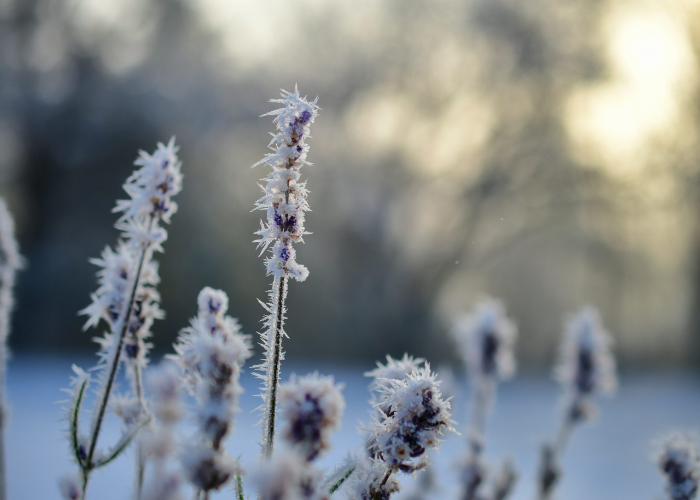
If your lavender variety can survive outside during winter, you must ensure the appropriate growing conditions are present for your plants. Before winter begins, your lavender plants should be in a growing medium with good drainage. Improve the drainage where possible, especially if lavender is growing in the ground. If your lavender gets waterlogged, it might not survive the cold months.
4. Potting Up and Moving Tender Lavender
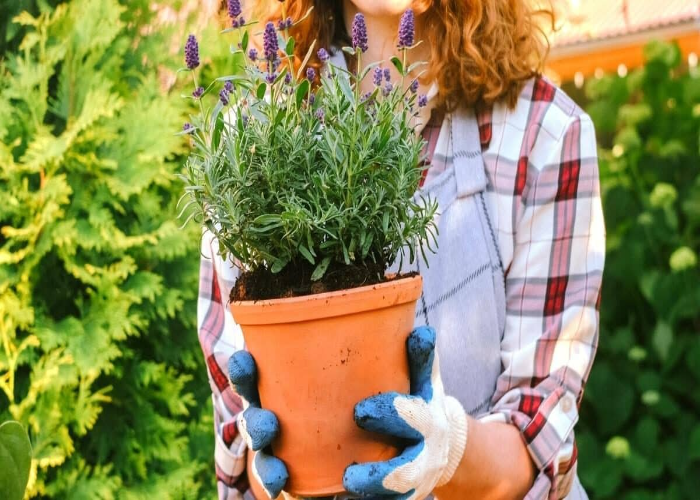
If your lavenders are tender and you live in a cold region, consider taking them indoors or keeping them under a cover during the winter months. Moving your lavenders in containers or pots to a dry and sheltered site in a greenhouse, polytunnel, or a cooler section of your home might be better. Lavender plants enter a dormant state during winter, so do not water it; rainfall will be enough. If growing lavender indoors, water your plant a few times in the coldest months before your plants go outside once more.
Conclusion
All in all, lavender is such a fantastic choice to make when planning your garden. They thrive in full sunlight and are drought-tolerant plants making your life easier. They are easy to grow and maintain; grow them indoors or outdoors depending on the variety’s hardiness.
Pollinators like bees and butterflies will visit your garden regularly due to your lavender flowers; admire the vibrant shades of blue, pink, purple, and white. English lavenders give new growth every spring since they are perennial, and when they become too old and leggy, just replace them.
There is a reason why so many gardens in the UK have lavender planted in them. As long as you care for them, your lavender plants will bloom. So knowing what type of soil to use, when to water, which variety to plant, when to prune lavender, how to overwinter, and other instructions are essential for you to understand.
Please write down your experiences with planting lavender in the comments below.

![How to Grow and Prune Lavender [Winter Care Tips]](https://www.thearches.co.uk/wp-content/uploads/Lavender-Winter-Care-Guidelines.jpg)



